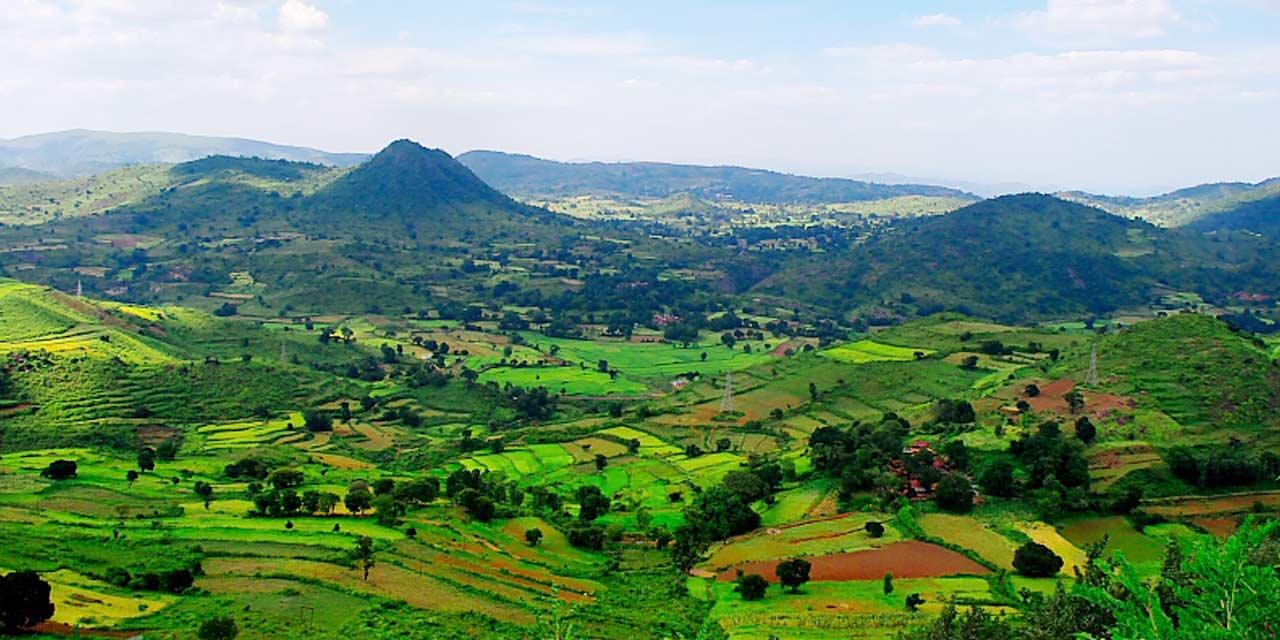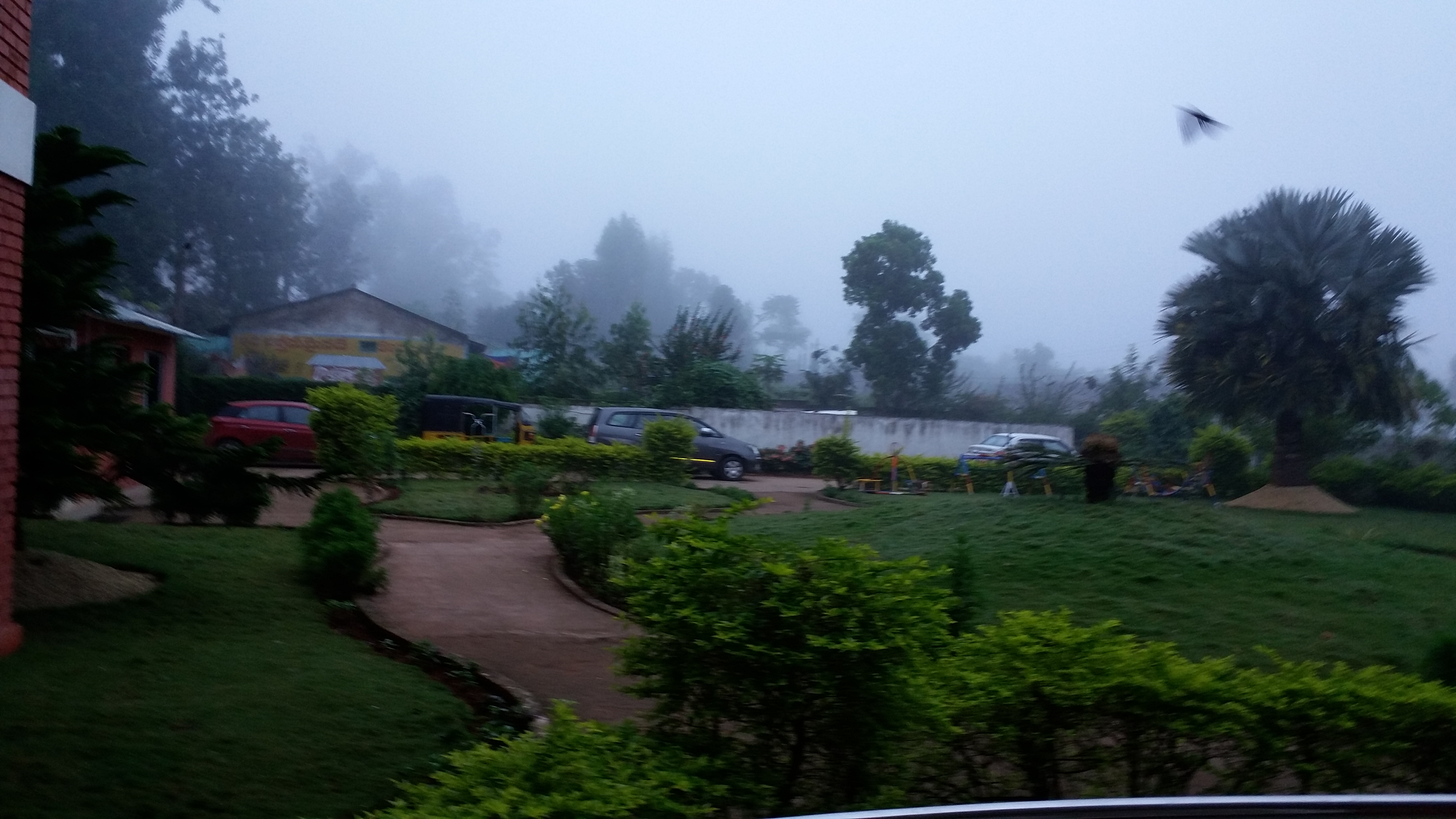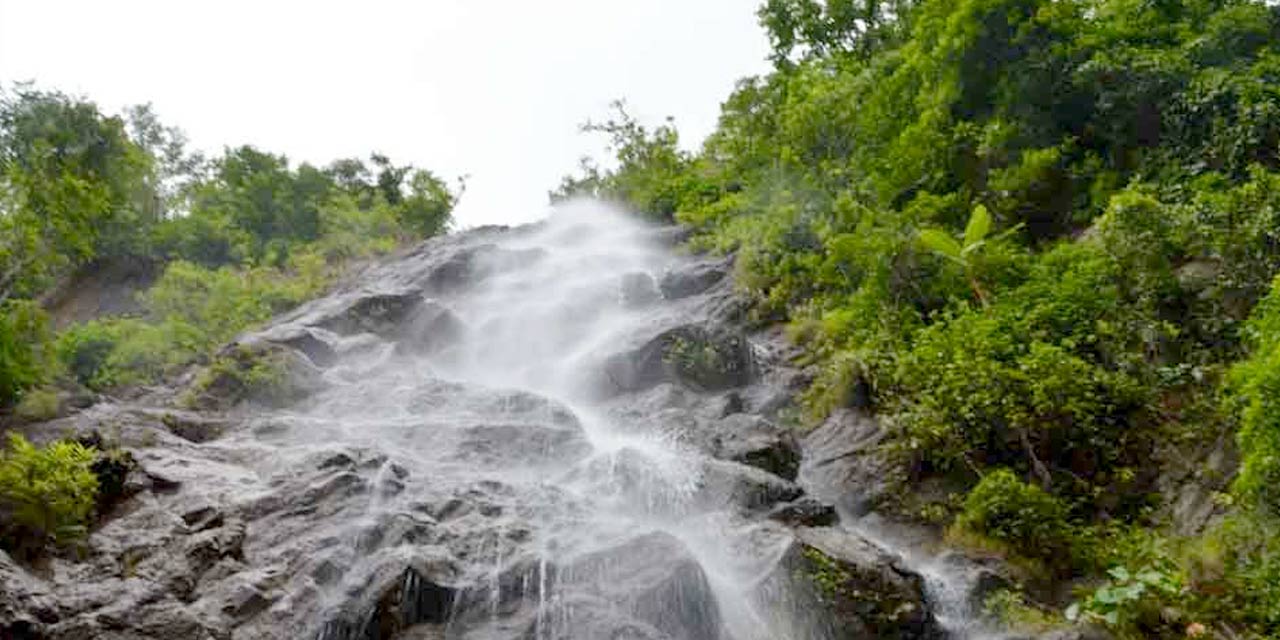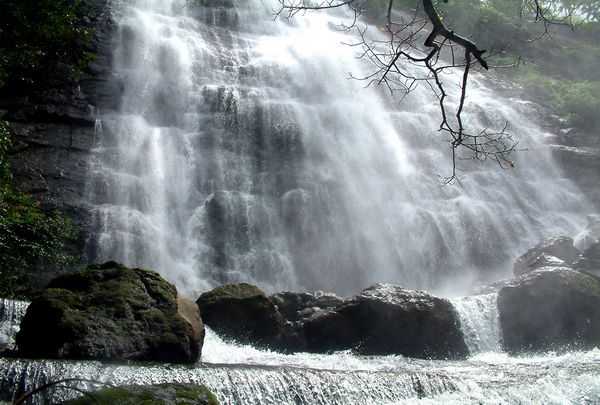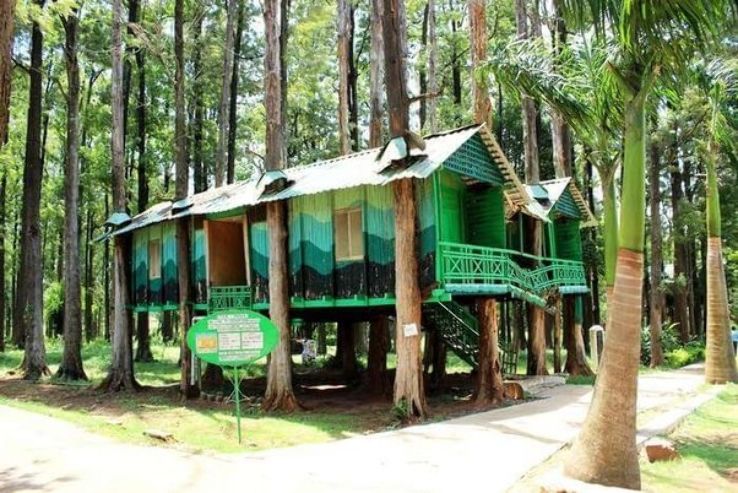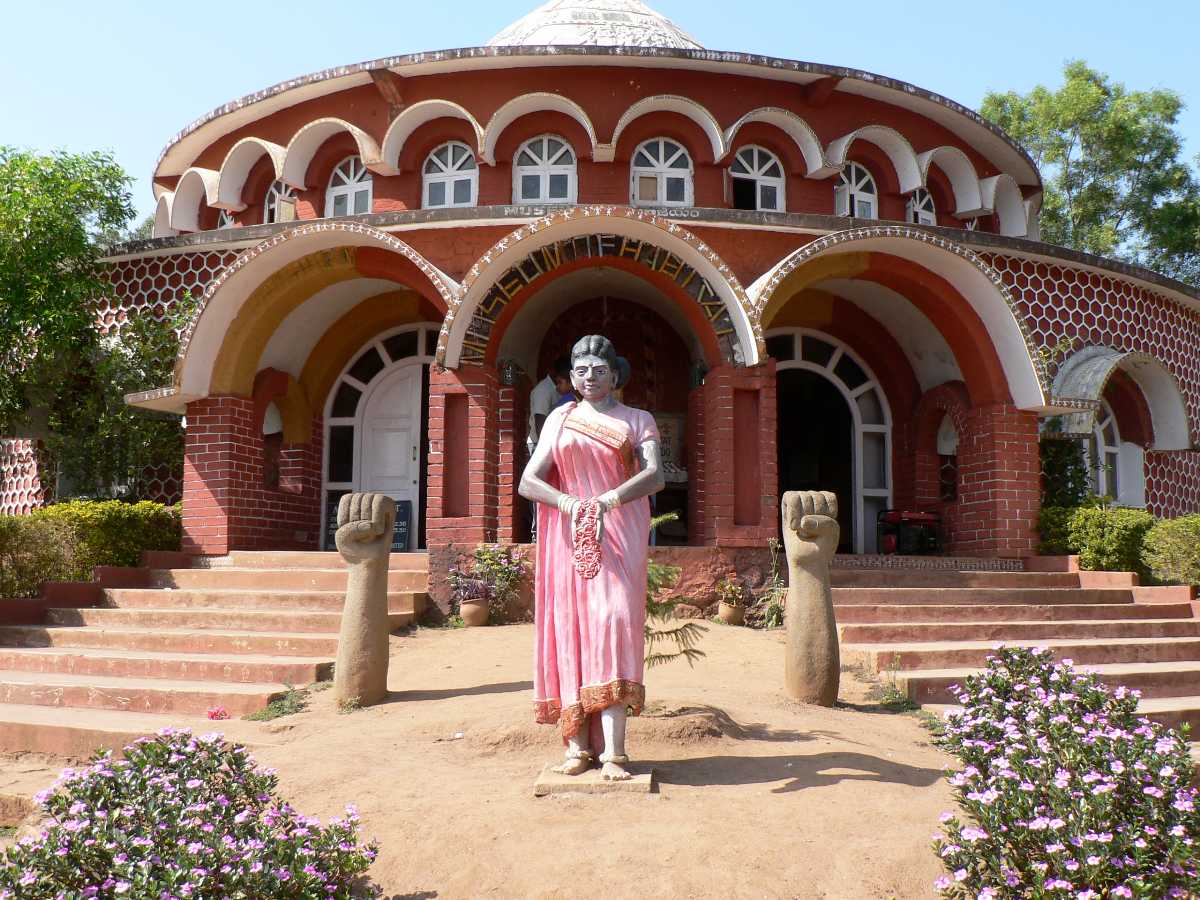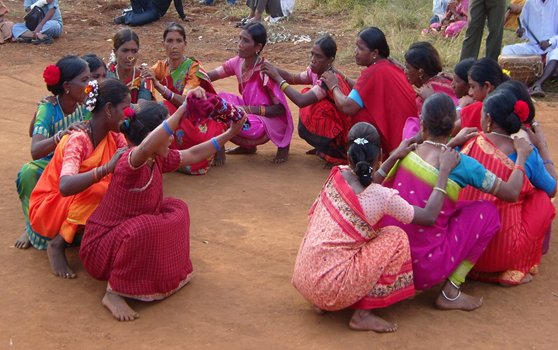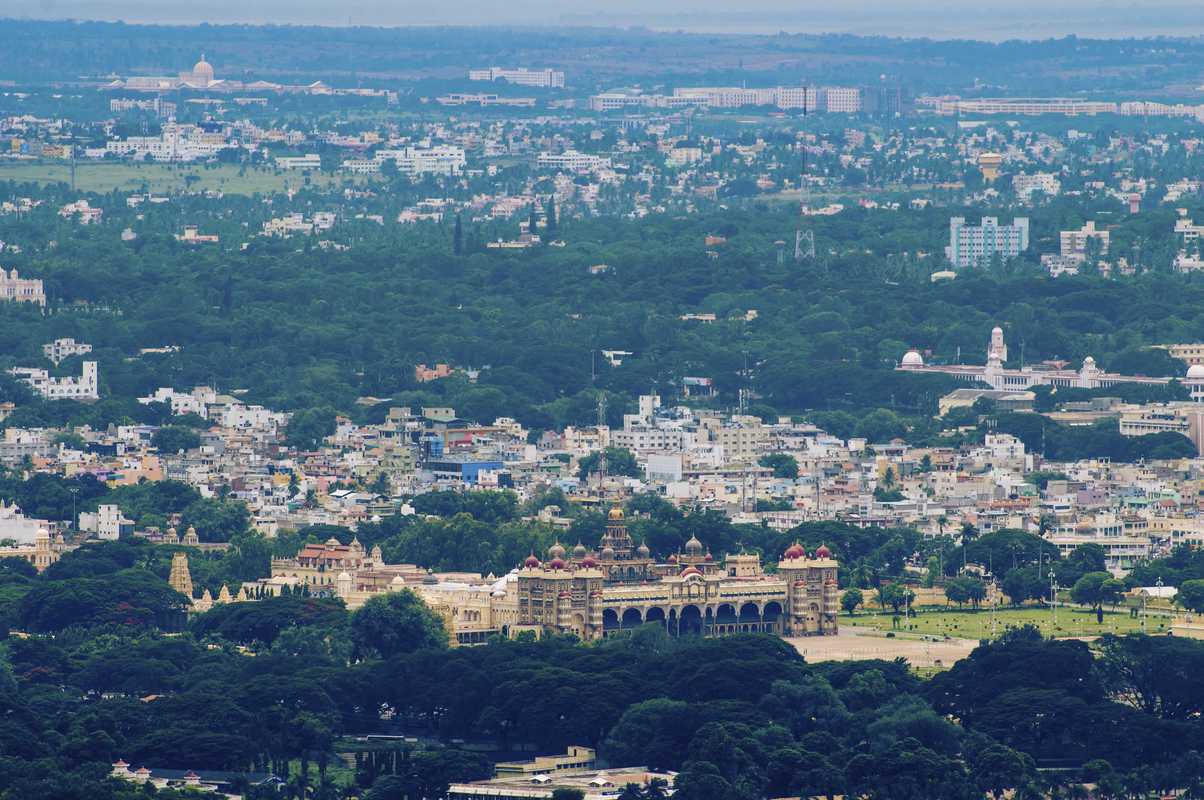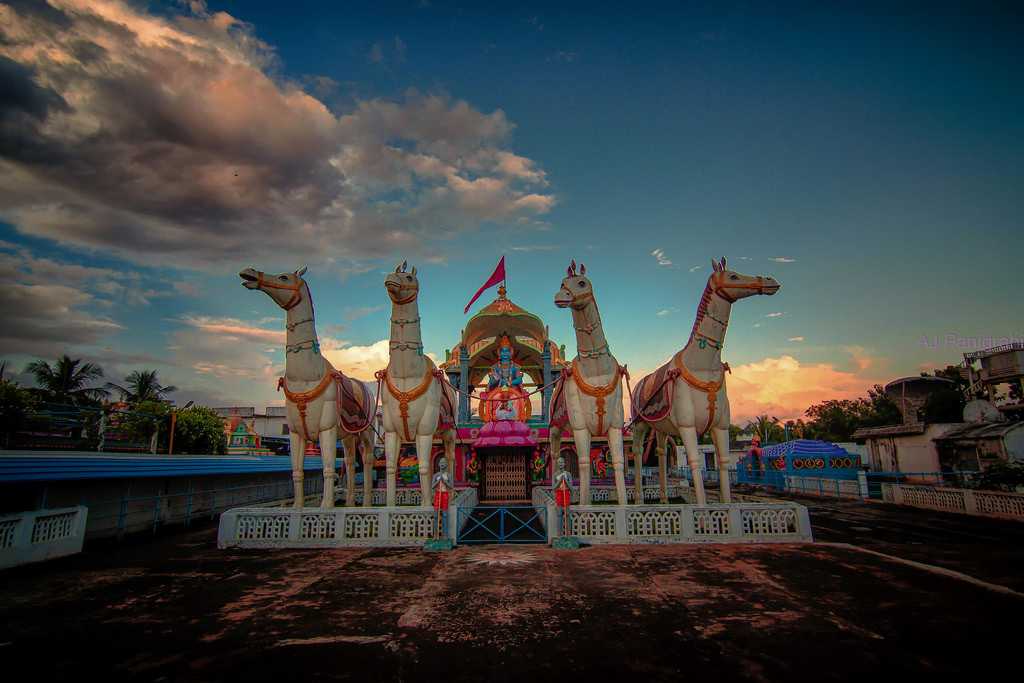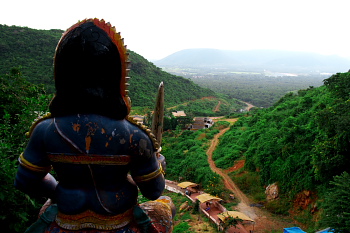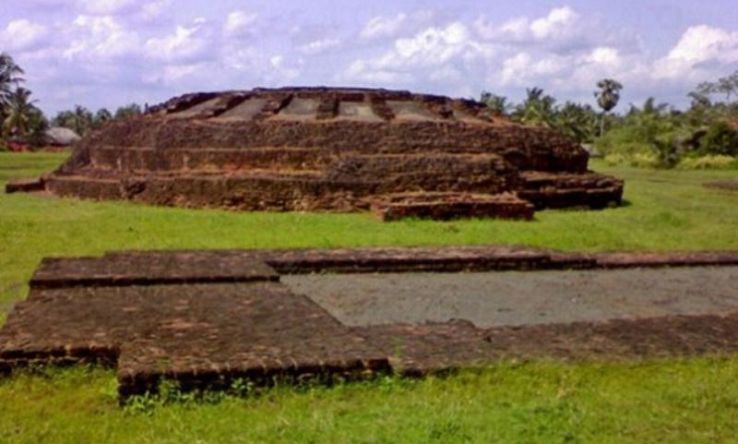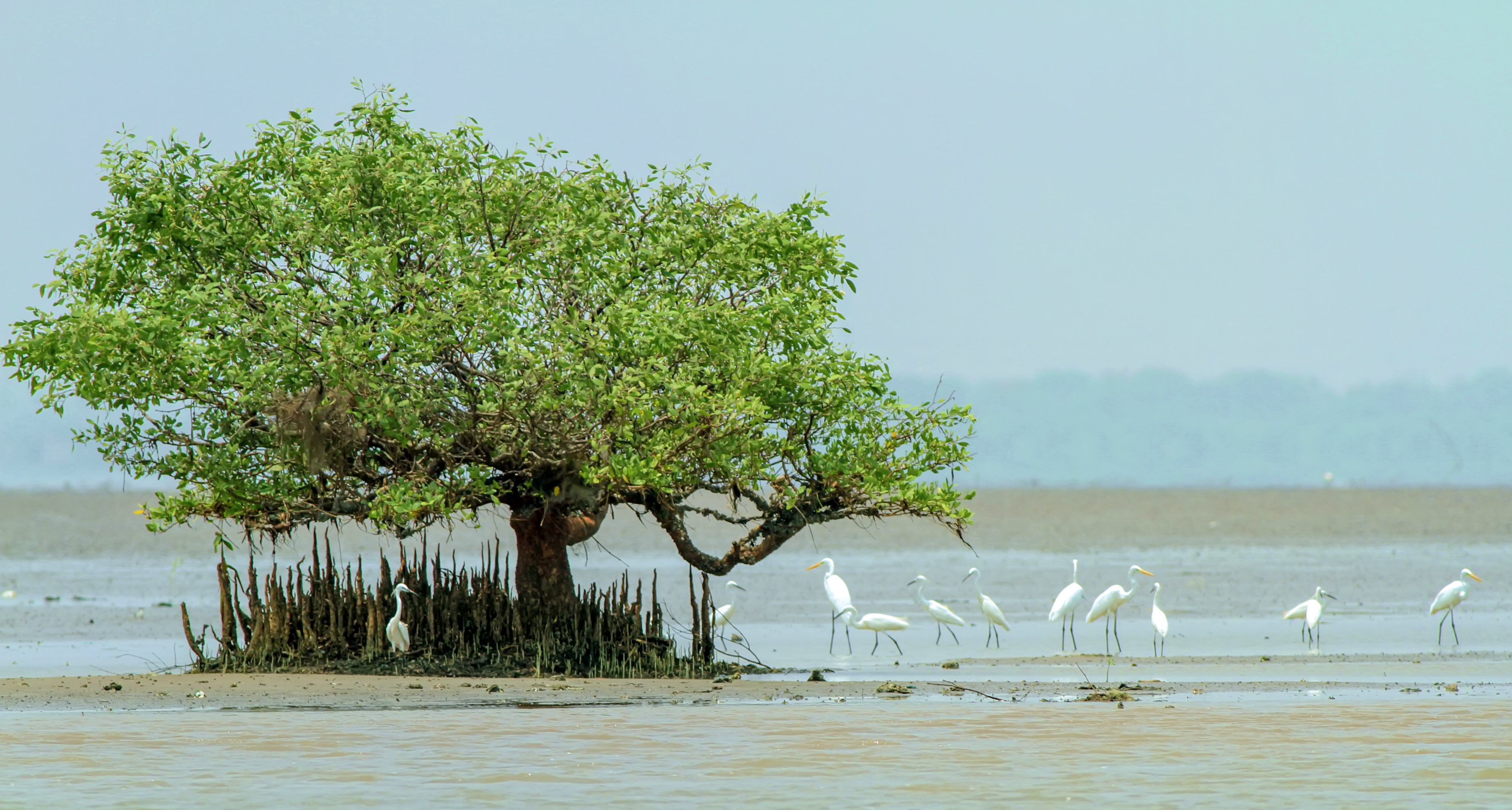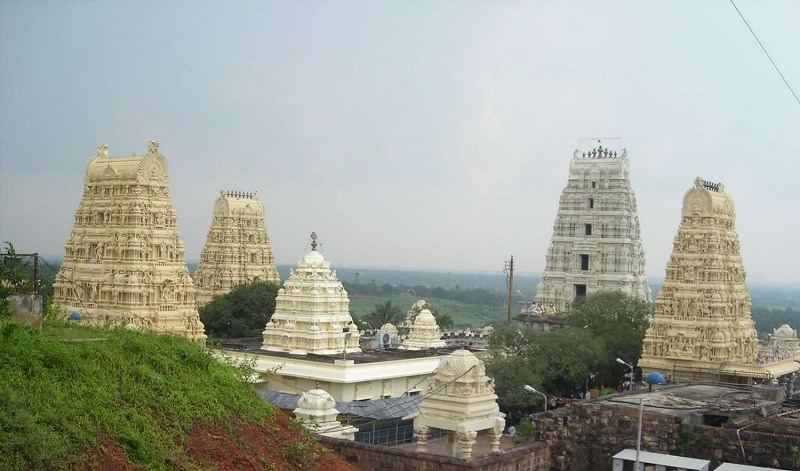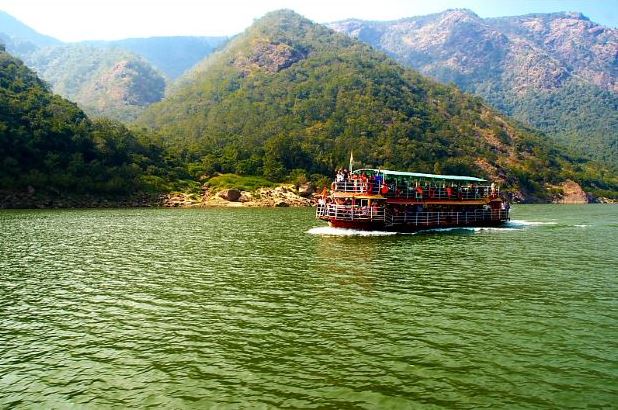After learning a bit more about the state and the current capital of Vishakapatanam, let’s go visit more places in this part
Araku Valley
A comparatively unexplored hill station close to Vizag and a local weekend getaway favourite, Araku Valley is situated some 120 kilometres away from the city. Located in the gentle hills of Eastern Ghats, Araku Valley is also home to a number of tribes, few tribal caves and the Museum of Tribal Arts. The valley is quite famous for its exquisite coffee, and beautiful vistas where one can try their hand at a number of adventure sports.
Fondly called the Kashmir of Andhra Pradesh, Lambasingi is a quaint hamlet nestled in Chintapalli Mandal in the richly forested Arakku Valley at an elevation of 1025 m above the sea level. On of the best kept secrets of Andhra Pradesh, the dainty village is known for its majestic hills, apple orchards and panoramic views of the adjoining valleys. Also known as Korra Bayalu, the village is the only place in all of South India that experiences snowfall as the temperatures drop significantly in winters. Besides abundant natural beauty and the gorgeous views of towering hills and meandering rivers, the village also offers a plethora of adventure activities. The best time to visit Lambasingi is definitely during the winter months, between November and January, when you can experience snowfall in the otherwise plain area. Located at a distance of just 6 kms from Lambasingi, the Thajangi Reservoir is the most visited spot here with majestic hills in the backdrop and a mighty river flowing across. The Kothapalli waterfalls is another hidden gem with its gorgeous water cascading down in all its glory amidst natural environment with little or zero human interaction. The Susan Garden is located en route to Lambasingi and has beautiful yellow and black flowers and is a beautiful place in which to view the sunset.

Located in the Ananthagiri hills of the Araku Valley the Borra Caves are part of a breath taking hilly terrain, beautiful landscape, semi-evergreen moist deciduous forests, and wild fauna. A marvellous creation of nature, the Borra caves were formed when river waters flowed through a limestone area, and the calcium carbonate turned into calcium bicarbonate, easily washed out by the running water. The most striking feature of the caves is its exquisite variety of speleothems ranging in size. The caves are deemed to be among the largest in the country and are perched at a whopping elevation of about 705 metres. They are basically karstic limestone structures extending to a depth of 80 m and are considered to be the deepest cave in India. The combination of sunlight and dark conjures amazing dancing shaped in the depths of the Borra Caves, which is a sight in itself. Natural skylights in the caves make way for colourful imagery that imparts them a unique enigma of their own. The legend of Borra Caves is rich with narrations from tribal communities such as Jatapu, Porja, Kondadora, Nookadora and Valmiki, who inhabit the villages in the region. One such legend dictates that a cow dropped through a hole in the caves as it was grazing the nearby fields. Soon, people came looking for it and discovered a stone in the caves which resembled a Shiva Lingam. The cow returned safe and sound and the well-being of the animal was attributed to the Lingam. A small temple was soon built around the caves and people flocked the area to seek the blessings of the Lord. The history of Borra Caves is perhaps as old as that of the Araku Valley itself. Believed to have been formed as a result of perennial water flows over millions of years, the caves were discovered by British geologist William King in 1807. The process of the formation of the Borra Caves is quite intriguing as well with humic acid in the water reacting with the calcium carbonate in the limestone and dissolving the minerals breaking the rock gradually. As a result of this, varied rocks and shapes are formed in the caves. The total length of the Borra Caves is about 200 meters and the Dandakaranya – Bolangir – Kibur train track passes over the caves. Anthropologists have also found stone tools of middle Paleolithic Age dating back to 30000 to 50000 years indicating human habitation in the Borra Caves. Visitors will need about two to three hours to explore the caves which are open from 10 am to 5 pm every day. Entry fee are INR 40 for adults and INR 30 for children and there is a camera fee of INR 25.
The Katiki Falls originates from the river Gosthani and is located near the Borra Caves. The natural landscape surrounding the waterfall is lush green and goes through an uneven path that adds an element of adventure to the visitors trekking their way to the waterfall. The cool breeze, the greenery and the soothing sounds of the Katiki Waterfall will calm the mind and the 50 feet high natural formation is a breathtaking sight from a distance. Monsoons in the falls, in particular, are extremely beautiful. Visitors should try reaching as early as possible in the day to get enough daylight to explore. September to February is the best time to visit the waterfall as the forest is lush green, the weather stays cool and dry throughout the day, making the climb up to the waterfall pleasant.
The Tadimada Waterfalls is a beauty that is also commonly known as the Ananthagiri Waterfalls. The waters splashing from 100 ft above creates a majestic view and soothes one’s soul. The falls are best visited just after the monsoon season from August to October and the falls are open dailt between 9 am to 5 pm. At a dustance of just 13 km from Araku, the Chaparai or Dumbriguda waterfalls is one of the most popular weekend destinations and a popular Telugu film industry shooting spot. The best time to visit the falls would be at sunrise or sunset and after the monsoon season between October to March when the falls are not too dry and not slippery either. There is an entry fee of INR 10 per person.
Popularly known as the fish pool, the Matsyagundam near Paderu harbours a variety of fishes and is home to a century-old temple known as Sri Matsyalingeshwara Swamy Temple. It is believed that there was a massive fight between Singarajulu or snakes and the Matsyarajulu or fish in a place known as Gemmili after which the Mother Fish rescued all the fishes and brought them here. Later on, the hamlet came to be known as Matsya Gundam. Till day, owing to this belief, the natives do not kill or consume fish. The best time to visit Matsyagundam is during the festival of Mahashivaratri.
The Padmapuram Gardens is known to be a local favourite boasting variety of species of flora, an exquisite rose garden, treetop huts and a fun toy train for rides around it. The garden was built to supply food and vegetables to soldiers of World War II in 1942 in a plot of 26 acres and later on, converted into a horticulture nursery with a training centre. The range of flower species and trees is a visual feast, which can be enjoyed even more if one decides to stay in one of the hanging cottages ten feet above the ground. The gardens are pen from 9 am to 6 pm daily and has an entry fee of INR 40 for adults and INR 20 for children.
Opened in 1996 the Araku Tribal Museum depicts the tribal culture of Andhra Pradesh. From utensils, jewellery, hunting tools to wedding photographs, the museum gives a taste of what traditional tribal lives look like. Located 200 metres from the Araku bus station, the museum is not historical but has been constructed to enlighten people about the tribal way of life, with the display of the lifestyle of about 19 tribes living in the vicinity. While tribal artworks adorn the walls, local Mayur and Dhimsa dances are exhibited at one of the sections on the museum. Interestingly, the museum is home to a fortune teller with a parrot who speaks only the local language and whose predictions are believed to be accurate. The two-storied building is an excellent place to get souvenirs; the money for which goes to the locals as one of their sources of employment. Open from 10 am to 6 pm daily, there is an entry fee of INR 40 for adults and INR 20 for children.
The Bheemili Beach is located at the origin of River Gosthani in Bheemunipatnam. Remnants of 17th century British and Dutch settlements can be seen here, including a fort and cemetery. The beautiful Bheemli beach also has a lighthouse and a minor port. Recently, a beach-park has been developed on the Vishakhapatnam – Bheemili beach road as a tourist attraction. This scenic beach also offers water sports. In the colonial era, both East India Companies had their trading ports here.
The native tribal community of Araku Valley celebrates a hunting festival during April called Itika Pongal similar to hunting festivals of other tribal communities. The festival serves as a perfect occasion to witness the tribal culture of the state when the women of the tribe perform their traditional dance forms like Dhimsa and Mayur which is performed in groups and only women take part in the celebrations.
Vizianagaram
Lying close to the coastline of the Bay of Bengal on the eastern ghats, Vizianagaram is a city deriving its name from the princely district of Vizianagaram with the name of the city meaning the City of Victory. Bounded by Vishakhapatnam on the west and south, and the Bay of Bengal on the northwest, Vizianagaram is known for the wholesale textile market to the neighbouring towns as well. Steeped by a glorious past, the region is known to be strongly linked with a rich history of Kalinga. The city has also been witness to a war between the French and English. Today the city is adorned with temples, majestic forts, beautiful neighbouring cities and bounty of nature. The major rivers that flow through the city are Nagavali, Gomukhi, Vegavathi, Chempavathi, Suvarnamukhi, and Gostani.
The Vizianagaram Fort was founded by Vijayarama Raju I in 1713. The main entrance to this fort was the Victory Arch but the main entrance has been changed to the East Gate. The Victory Arch has a temple of Lord Hanuman on one side and a temple of Goddess Lakshmi on the other who is also popular by the name of Kota Shakti. It is believed that the Raja of Vizianagaram would especially seek blessings of this goddess before going to war. The palace at the fort was constructed in 1869 as the king’s court. Two exquisite marble statue welcomes visitors at the entrance of the mahal and the first floor of the building is today used as a college for women as well as a museum.
Situated about 10 km from Vizianagaram, the Jami Vruksham is a tree lying on the banks of the River Gowthami. As per the legend, it is said that while on exile, Pandavas hid their weapons in this tree. Almost at the same time, two idols of Lord Vishnu in form of Sri Jannardhana Swami and Sri Tripuranatha Swami were installed at Jami by Dharma Raja and Kunti Devi. The idol of Lord Venu Gopala Swami, on being discovered by the locals in the 14th and 15th centuries was installed in between the two shrines. According to another legend, people in order to shift the temple tried to uproot the lingam which is 179 m long and fixed deep in the earth but failed.
A sacred site with one of the oldest Shiva temples, Punyagiri is located about 25 km from Vizianagaram. The most prominent feature of the temple is that the lingam enshrined in the temple is bathed by an underground water source. Close to the temple is a cave where three lingams are installed with water falling on them constantly. However, it is during the festival of Maha Shivaratri that devotees flock the place in large number. As per the legend, going for the darshan of the lingam after a bath in a nearby waterfall helps you achieve moksha or salvation.
The Venkateswara Alayam Govindpuram situated around 20 km from Vizianagaram is village housing a temple famous for its magnificent sculpture of Lord Krishna on a chariot with the most striking feature of the place being a Gita Mandir which is flocked by devotees from all around the globe. The spectacular structure of the temple measures as 90 feet long, 45 feet wide and 63 feet high.
Saripalli is a small village situated on the banks of Champavathi river and lies in the Nellimarla mandal and is mainly renowned for its beautiful temple of Dibbi Lingeswara Swami temple which is said to be built under the reign of Chalukyas.
Kumili, situated about 20 km from Vizianagaram is a small quaint village which is famous for its bunch of beautiful temple all clustered in a complex. These temples were established about 10 years ago by a local devotee. Each temple is adorned with intricately carved sculptures, idols and paintings on the walls. The complex comprises of temple dedicated to Kalika Devi, Satyanarayana Swamy, Navagrahalu and Lord Ganapathi. Devotees will also find temple devoted to Anjaneya Swamy, Lord Subramanyeswara, Lord Venu Gopalaswamy and Seetharamaswamy.
Raamateertham is located nearly 13 km away from Vizianagaram on the Bavikonda Hill and is renowned as a site adorned with a 1000 year old Lord Rama temple, established during the 16th century under the reign of the Pashupati kings. The most striking feature of the temple is that it exists on a massive rock. Situated in the proximity of the temple is also a lake called Koneru. Another major tourist spot in the area lying close to the temple is the ruins of Buddhist Mahasthupa situated on a hilltop called Gurubukhatakonda. Crafted with bricks, the shrine measures to be 19 feet tall and 65 feet in diameter and is adorned with carvings of Jain Thirtankaras.
Founded during the 17th century by Pedda Rayudu, the town of Bobbili was initially named Pedda-Puli which means the big tiger after Sher Muhammad Khan, the Nawab of Srikakulam. He had granted it as a present to Maharaja of Venkatgiri for his services in his southern campaign. Over the period of time, the town came to be known as Pebbuli, then Bebbuli and finally, Bobbili. The Battle of Bobbili fought in 1757 by the Vizianagaram Kings with the help of French General Marquis de Bussy, is one of the most significant events in the history of Andhra Pradesh. Apart from this battle, the town is also famous for the fort of Bobbili and the Venugopala Swami Temple. The town is popular for the manufacturing of the Veena and the unique style to play it which was developed over three centuries and is known as Bobbili Veena Sampradayam.
Annavaram
Located in the East Godavari district, Annavaram is a small hamlet on the banks of the river Pampa. It is on the hilltop of Ratnagiri, with the temple village being famous for its shrine of Sri Veera Venkata Satyanarayana Swamy, a form of the Hindu deity, Lord Vishnu. The Annavaram Devasthanam is a sacred pilgrim centre that’s thronged by devotees every month, most of them who come to perform the special prayer or vrata, of Satyanarayana Vratam to please Lord Vishnu. The prayer is mostly performed before housewarming ceremonies and wedding functions. Considered second to only Tirupati, the temple village of Annavaram rests on the belief that its name is derived from Anna, meaning whatever you desire and Varam, which means Godsent. The deity will bestow you with whatever you desire goes a common refrain. The temple situated on the top of the Ratnagiri hills is almost an entire kilometre away from its base and can either be reached by the steps on the Ghat Road or trekked via a stone path with about 460 steps. Constructed in 1891 by a landlord of the time, Raja Ramanarayana, the main temple was constructed in the form of a chariot with four wheels at each of the four corners. The Pampa river encircles the Ratnagiri hill on which the Satyaranayana Swamy temple is located. There is a barrage built on the Pampa river which has a boating facility. The beauty of the Pampa river and the towering Ratnagiri makes boating here a memorable experience.
Samalkot
A small quaint town with a rustic charm, Samalkot is located in the East Godavari district and is regarded as holy by the devotees of Lord Shiva. It is renowned as a site of one of the Pancharama Temples, Pancharama being one of the forms of Lord Shiva known as Sri Kumararama Bheemeshwara Swami. Also known as Samarlakota, this beautiful town sees an influx of devotees in large number especially during the festivals like Shivaratri. Besides its great religious significance, Samalkot in recent time has witnessed a boom in industrialization and is home to several big names of Indian industries. The Kumararama Bheemeshwara Swamy temple is a specimen of the Dravidian style of architecture and is regarded as the main landmark of Samalkot. Dedicated to Lord Shiva, this temple features 100 pillars that support the whole structure of the temple comprising of two stories. A monolithic statue of Nandi is placed at the entrance guarding the Shiva lingam. On the ground floor of the temple the idol of Goddess Bala Tripura Sundari the incarnation of Goddess Parvati is installed. The temple’s main entrance is known as Surya Dwaram while the main shrine of the temple lies in the middle of the inner sanctum and is a rectangular structure enshrined with the 14 feet tall limestone lingam that begins from the podium on the ground floor and rises till second floor piercing through roof where the presiding deity is Lord Rudrabhaga. Devotees can offer their prayer to lingam from first floor which has been recently renovated detailed with intricate designs of flat leaves, lotuses, salas, kalasa and row of geese kutas. From the east side of the temple, where mandapam called Koneti is situated one can witness the Pushkarni Lake.
Thalupulamma Thalli is nestled in between a hill amid the panoramic vistas of nature with the temple quite famed as almost everybody in the state visits here to offer prayers to the Goddess after owning a new vehicle. Devotees offer goats and chicken as a part of the worshipping. Featuring a captivating colourful and intricately carved structure, the temple apart from being an important religious center, also makes for a popular picnic spot owing to its magnificent scenic location.
Kakinada
A city with a perfect blend of new and old, Kakinada is often referred to as the fertilizer city. Known as Kaki Nandiwada when it was a Dutch settlement, the city used to store and export Sarees known as Coca or Koka in Telugu and allied products and hence it came to be known as Coca-nada. There is also a theory that when the British East India Company ruled this city, they had difficulty in pronouncing the city’s name Coca-nada, so they changed it as Co-Canada for their convenience. It is even referred to as Coringa by the Britishers because of the proximity of its sea port to the river Koringa. After Independence, it became Kakinada with some theories suggesting that Kakasura’s losing his eye by an arrow of Lord Rama gave the name Kakinada or that Kaki Nandivada is derived from Kaka, an Ikshvaku king who built the town. Another theory says that it is Kakulavada, an abode of crows – for catching fish on the shore.
Pithapuram is a temple town, highly revered for being the site of a number of temples with Shripada Shri Vallabha, believed to be an incarnation of Lord Dattatreya, having resided here. The whole town is full of stories, legends, history and stunning architecture. Devotees also maintain that a part of Goddess Parvati’s body, her left hand fell here, and it is a Shakti Peetha as well. The Shri Bhavanarayana Swamy temple in Sarpavaram is dedicated to Lord Vishnu in form of Lord Bhavanarayan and is believed to have been visited by ancient sages like Vyasa and Agastya.
Located on the eastern bank of the Godavari, the Draksharamam temple is one of the five most powerful and prominent temples dedicated to Lord Shiva in the country. Dating back to the 11th century, the temple and the area surrounding it is also known as Dakshin Kashi or southern Kashi, signifying its importance as a place of immense religious importance. The architecture of the ancient temple is fascinating as it adorns many inscriptions, symbols and visuals carved on them. There are several stories which go around the formation of this temple and the Sapta Godavari Kundam near the temple. The temple is open every day between 6 am and 7:30 pm.
One of the safest and mesmerising beaches on the eastern coast of India, Uppada Beach has an extensive shoreline, offering the perfect spot to catch sunrises and sunsets. The beach is an ideal shore for deep water fishing.
A place of several excavated monuments, Adurru is situated in the Razole taluk with several excavated ruins found in 1953 including Buddhist Stupas, chaityas and Viharas. Another major attraction of the place is the Mahastupa which is crafted like a wheel on a raised dais with a diameter of 17 feet. The digging in the area also lead to plethora of ancient artifacts such as jars, dishes, bowls of kaolin, troughs and red pottery. Among the local residents of the village, Adurru mound is known as Dubaraju Gudi.
Located at a distance of 22 km away from the Kakinada Beach, the Coringa Wildlife Sanctuary spread over 235 sq km is not just a wildlife sanctuary but also an estuary. It is home to as many as 35 species of mangrove plants, 120 species of rare birds and innumerable species of flora. This sanctuary is also famous for being home to the critically endangered white-backed vulture and long-billed vulture. Since it is an estuary, visitors can also get a stunning view of the spot where the sea meets the river. The sanctuary has wide wooden bridges built through the dense forest lands that allow visitors to walk through the forest looking at the flora and fauna. Being an estuary of the River Godavari, the sanctuary has mangrove vegetation and there are 35 species of plants here which belong to 24 different families. The mangrove vegetation of the sanctuary provides the feed for the significant number of birds residing here with the Coringa Wildlife Sanctuary housing many critically endangered and endangered species of animals like the long-billed vulture, white-backed vulture, Oriental white ibis, painted stork and spot-billed pelican. Almost 120 different species of birds have made this sanctuary their home. The climate here is mostly hot and humid with temperature going as high as 47 degrees celcius during the summer months of May to June and falling to 14 degrees celcius during winter months of December to January and the best time to visit is between October to May. Boating is available from the sanctuary to the mouth of the river Godavari which is a must try activity here. The boat rides available here include Jet Ski for 1 person, Speed Boat for up to 4 people and Slow Speed Boat for 10 to 50 people. Another major attraction in the sanctuary is the wooden walkway installed in the middle of the mangrove with a breathtaking view of the sea intermingling with the river. Closed on Tuesdays, the sanctuary is open from 9 am to 5 pm on all other days. Keep aside at least half a day for the sanctuary which has an entry fee of INR 10 for adults and INR 5 for children. Boating prices vary depending on the number of people.

Rajahmundry
Located on the banks of the Godavari river, and officially known as Rajamahendravaram, Rajahmundry is the biggest city of the east and west Godavari district. Touted to be one of the oldest cities in India, Rajahmundry was founded in the 11th century by the Chalukya King, Raja Raja Narendra from whose name the city’s name was derived. The city was earlier called Rajamahendravaram, derived from the Sanskrit name Rajamahendrapuram or the city of King Mahendra. Also meaning the same, it is also referred to as Rajamahendri, which during the British colonial era became Rajahmundry. Rajahmundry was established by Ammaraja Vishnuvardhana the First who ruled between 919–934. The city as a prominent settlement can be traced back to the rule of the Eastern Chalukya king Rajaraja Narendra, who reigned around 1022 AD. Rajahmundry is believed to be the birth city of the Telugu language and is primarily known to be a pilgrimage spot for Hindus, owing to the presence of several places of worship, the most famous of which is the Sri Veerabhadra Swamy Temple. The Pushkara ghats, located along the banks of the river Godavari, is where the grand Pushkara festivals are held every 12 years.
Situated at a distance of 94 km from Rajahmundry, the Dwaraka Tirumala is an ancient holy town and a popular pilgrimage spot. The highlight of the village is the revered shrine dedicated to Lord Venkateshwar with a colossal statue of the Lord at the back of the temple and the temple is also called Chinna Tirupati or Little Tirupati after the presiding deity.
Known as the second-largest ISKON temple in southern India, after the temple in Bengaluru, the ISKON temple is also known as Gowthami Ghat and is a popular worship spot. Built across 2 acres of land on the banks of the Godavari River, this temple is primarily dedicated to Lord Krishna. The temple is open from 7:30 am to 1 pm and then 4:30 to 8:30 pm daily. The Goutami Ghat is one of the premier recreational spots housing the ISKCON Temple, Riverbay Resorts and Water park, Ayyappa Temple and Kailash Bhoomi.
Spanning across 2.1 km atop the river Godavari, the Godavari Bridge is India’s third largest rail cum road truss bridge. Also known as the Kovvur – Rajahmundry Bridge, the bridge is also a major source of tourism as it offers picturesque views of the golden sun setting in the horizon and merging with the shining water of the Godavari. Known to be synonymous with the arts and culture of the city, the bridge has a road deck over a single track rail deck.
Constructed in 1988, the Sir Arthur Cotton Museum is dedicated to the memory of Sir Arthur Cotton who was the mastermind behind the transformation for the ferocious Godavari river into a tame force useful for irrigation and water supply. He is popularly known as the Delta Architect of the Godavari district and the museum chronicles his work through pictures.
The Papikondalu mountain range runs along the River Godavari on its western side and is a sheer fest to the eyes in terms of its scenic beauty. As the hills become closer and closer to the visitor, the width of the mighty Godavari becomes narrower. In accordance with this view resembling the middle partition of a woman’s hair, it was initially named as Papidi Kondalu, Paidi in Telugu means the middle partition of a woman’s hair and later, it came to be known as Papikondalu in the local language. The river narrowing, its twists and turns along with the Papi Hills form a breathtaking visual experience. Its beauty is often compared to that of Kashmir as the area around the ranges is quaint and bountiful with nature. The ranges also boast of waterfalls at Munivaatnam. The Gandi Pochamma Temple, Perantpali village with the Ramakrishna Muni Vatika ashram and Swami Veereswara temple and Kolluru village where you could get a bamboo hut to spend a night are must see places here.
Part of one of the premium eco-tourism projects of the country, Maredumilli is a terrain of undulating plains, evergreen forests and rich biodiversity, located in the East Godavari district, which is known for its rivers, ravines and lush greeneries, With dense woods and the smell of the wild enveloping the region, an exploding count of flora and fauna, sparkling rapids gushing down the slopes and crevices and exciting campsites to explore, Maredumilli is sincerely one of the best destinations to spend a weekend away from the madding city crowds and the monotony of everyday life. Maredumilli is known for its extensive collection of medicinal plants, and this site is only a further effort to spread public awareness about the benefits of indigenous medicinal plants. Visitors can also pay a visit to the APFDC coffee and pepper plantations, which are located near Nandanavanam where one can see from close quarters how our favourite spice and beverage are grown, cultivated and reaped in a perfectly scientific manner. Located deep in the forests of Maredumili, along the Valamuru river, is the Jungle Star camping site which has a historical and mythological significance as well. It is believed that this place is said to the ground where Bali and Sugriva from the Ramayana battled for the throne of Kishkindha. The Bali-Sugriva Konda is a major attraction here, and there are also opportunities of trekking through the woods, enjoying tribal music and dance performances or just enjoy the serenity of the jungle in the bosom of nature.
Located at a distance of 40 km from Rajahamundry, Pattiseema is a dreamy rustic hamlet enveloped in the dense green forests of the Papikondalu hill range and the Eastern Ghats. Owing to its beauty, picturesque landscape and a pleasant ambiance, the village has lately gained tourism potential and also lures filmmakers to capture the beauty of the place. Flanked by the gorgeous and gleaming Godavari river, the village is like a green oasis in the centre of city chaos and cacophony and is widely visited by tourists seeking solitude and peace. The highlight of the village is the Sri Veerabhadra Temple which is perched atop the hillock and is dedicated to Lord Shiva. The temple also has a separate shrine of Goddess Bhadrakali which is highly revered by the Hindus. There is only one way to get to this temple, which is through the river in a boat amidst picturesque surroundings. There is also another temple that is dedicated to Sri Bhavananarayana Swamy.
Moving along, our next part will detail what one can expect in Amaravathi, Vijayawada, and Machilipatnam

